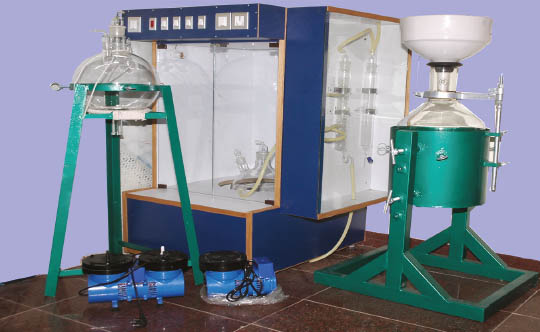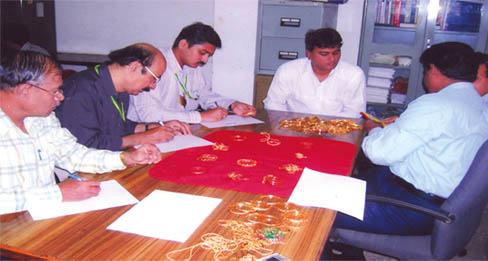Jewel to every consumer in the world means that it adds to their personality that improves ones outlook besides that it is also reflection of tradition, culture, ritual and represents many symbol and beliefs in India. The change in the modern jewellery market though has extensively differentiated the purchase experience for the consumers, but it has less differentiated the expression in terms of designs of the jewellery; this also could largely mean that our Indian craftsman has given to the consumer, especially women, who constitute more than 90% of the user, unlimited designs and tastes in the past; the only variation in the jewel taste of Indian women is that the role of daily use is ever increasing as compared to occasional use of jewels in the past, which therefore leads to usability as a frequent wear, to be more; this means that more ornaments for less gold (as in line with any other consumer behavior “more for less”); that has forced the traditional artisans to many challenges in the modern manufacturing of gold jewellery for Indian women.
The market is taking a balance in the multidimensional forces: price or cost, ability to buy, design variations, volumes, refurbishing or exchanges and marketing. The only solution to maximize the business of craftsman or goldsmith or the manufacturer amidst these forces is the Technology. Technology plays role in all cycles of jewellery manufacturing: designing, melting & drawing, refining, dye or mould making, casting, testing and fixing, electro plating, enameling, carving & stone fixing, assembling; consumers want even virtual simulation of the suitability of the design to her before even the production for which software’s are extensively available; as the market is open consumers want absolute transparency and freedom to trade her product without getting locked to a vendor or retailer, there comes the BIS standards and the technology such as measurements such as weight, metal composition and assessment without destructive testing have proven to be highly possible and viable using laser scans. To be more categorical, machineries – mechanical, electrical, electronic including software applications – are essential element for anyone in this market to be sustainable and profitable.
The days are not too far to say the as we have in food industry – ready to cook or eat – or just in time paint manufacturing or tailor made garments - we will soon see the days of design to product in minutes or hours as tailor made becoming an option for new market space in Indian consumer markets using rapid prototyping or manufacturing machines available in the retail counters at their backyard workshops. Soon adaptation to technology will be the underlying vehicle for any skilled artisan or manufacturer or retailer in this market in India, which will behave differently from any gold jewellery market in the world, unlike many industries are impacted by westernization but jewellery will not be. So start and go for mechanization and automation as much as you can. Every Rupee investment will get you 30% more cost savings and profit improvement in your business.
While doing so technology transition becomes a big challenge for the players. In jewellery industry in India transition works in 5 steps; education, trials, implementation, improvement and proficiency; generally it takes 2 years of sustained effort by oneself to reach the proficient level of using technology in this trade. However transition has a cost which has to be treated as investment by the player rather not to look at it with short sightedness. With gold price going up always in long run, as with economy, it must be noted by the player that the transition cost will be very less today as compared to technology transition cost after few years; this is a major difference between the jewellery industry and other traditional as well as modern industries. So why wait?
It is recommended for every player, which most of them are in traditional manufacturing or trade practices, to take an experienced consultant; we strongly recommend to the industry to adapt lean manufacturing as well as kaizen principles in their operations, no matter of their size or level of operations. The transition investment shall be more optimal if the transition are planned and designed along these lines.
Goldsmith academy is committed along with Friday Micro Ventures for the welfare of the traditional jewellery manufacturing industry in India for the competitiveness of the millions of goldsmiths in the modern market. You can
write to us at E-mail:- goldsmithacademy2012@gmail.com





